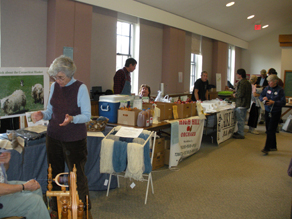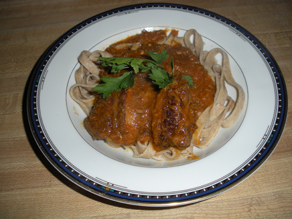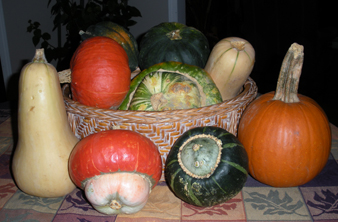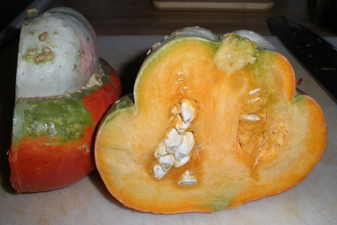Last January, I attended a talk by Michael Pollan in Madison, CT. The event included a Farmer’s Market, which included a CT NOFA display booth.They asked if I wanted to join and I admitted that I was not a farmer, just an eater. They said that was fine and I’ve been a member since. Membership in this organization has been particularly rewarding since it led me to local wheat, the 34th Annual NOFA Conference, At UMASS, Amherst, and most recently, CT NOFA’s 2008 Organic Harvest Celebration & Annual Meeting.
The program began with a farmers market and Expo, included a pot luck lunch from the local harvest, went on to the annual business meeting and election of officers, and closed with the keynote speaker.
Farmer’s Market
My market take:
- pears, Macoun apples, and cider from High Hill Orchards
- celeriac and rutabaga from Wayne’s Organic in Oneco, CT
- bee’s wax candles and skin care products from Three Sisters Farms
- raspberry jam from Hay House
Business Meeting
James Roby, president of CT NOFA (and owner of Roby’s Organics in Berlin, CT) shared his vision for the organization: that CT NOFA should become a leading educator of farmers, saying “the strength of a community lies in its ability to feed itself.” Noting that there are 88 different health districts in Connecticut, he challenged us to educate ourselves on our town’s ordinances and regulations and that if there was something we could not do that seemed like something we should be allowed to do (for example, own a Berkshire pig), to find out why and get involved.
Keynote Address
This year’s keynote speaker was Claire Criscuolo, founder and owner of Claire’s Corner Copia, an extremely popular organic restaurant in New Haven, CT, who’s topic was Good Food is Never Cheap, and Cheap Food is Never Good.
She spoke of the tremendous (and not so well-hidden) costs of cheap food: disease, environmental, and economic. She pointed out that while local and organic foods had a higher price point, they also had more features than other foods and that our job was to market those features. She quoted Michael Pollan’s Open Letter to the Next Farmer in Chief :at the end of World War II, home gardens were supplying 40% of the produce consumed in America. She called on farmers to teach people how to grow their own victory gardens, which, rather than competing with local produce, would foster an appreciation of what it took to grow good, real food.
She also shared information about The Growing Connection Earth Box project, which is a solution to situations where planting gardens in the ground may not be safe or feasible for a variety of reasons and also provides the ability to bring the garden into the classroom.
The only disappointment of the day was that I forgot my bag of a dozen red hot paper lantern peppers in a little brown bag under my seat.





